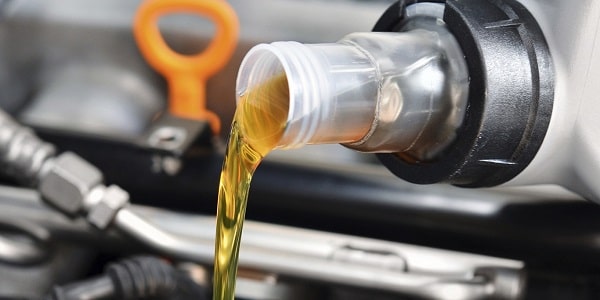The concept of numbers on engine oil
The role of engine oil in the car is vital and if there is a problem in its operation, all the operation of the car will be disrupted. Due to the high importance of engine oil, we must ensure that it is compatible with the car and also the high quality of each product.
But without knowing the engine oil table, choosing and buying from a variety of products is not easy; Engine oil numbers are often confusing for people who do not have enough information. In this article, we will review the inscriptions on engine oil and in the end you will see that the acronyms for engine oil are not so complicated.

Minerals
It is an oil based on crude oil and has been used in cars for many years
Synthetic
It is an oil produced from chemical compounds or the polymerization of hydrocarbons, not from the refining of crude oil. This type of oil was first used in jet engines and due to its advantages over the mineral type, its consumption in cars has also increased significantly in recent years.
The advantages of this type of oil include reducing oil consumption due to its longer life, non-corrosive and non-toxic properties, low evaporation power, high burning temperature, high resistance to oxidation, having a high viscosity index naturally (quick reaction versus Temperature changes), reduced fuel consumption by up to 2.4% and a low pour point. Disadvantages of this type of oil include high price and complete incompatibility with engines with old technology.
Semi-synthetic
It is a mixture of synthetic and mineral oils. This type of oil does not have the quality of synthetic oils, but in harsh conditions such as high temperatures or high loads, it performs better than the mineral type and is mostly used in pickups and high chassis. The price of this oil is a little more than minerals.
Power flow (Viscosity)
One of the numbers used to identify oils is the viscosity number, which means their flow rate. The higher this number, the higher the viscosity of the oil and the slower and slower it flows. For example, honey has a higher viscosity than water.
High viscosity oils are suitable for higher temperatures, and the lower the numbers, the lower the viscosity of the oil and the better for colder climates where the oil is difficult to flow.

From 0 to 60
The numbers used are from zero to 60, between which the number is between zero and 25 for winter oils and from 30 to 60 for summer oils.
These additives are multi-viscosity using additives to have less change in different temperature and working conditions. That is why the viscosity of the oil is represented by 2 numbers, the first of which indicates the lowest viscosity and the second and larger numbers represent the highest viscosity.
The letters SAE before the oils code are also to know that this oil is coded according to the SAE Association standardization.
Letter W
The letter W between these two numbers also means winter, which is derived from the word winter, and does not mean that this oil is suitable for the cold season, and only the measurement of cold weather in winter.
Therefore, the oil written on the can and container SAE 10W50 means that this oil is classified according to the standards of the Association of Automotive Engineers and at the hottest temperature, its viscosity criterion does not exceed 50 and in the coldest conditions does not fall below 10.
These numbers are between 0 and 60, which indicate the viscosity of the engine oil. The number 0 according to this standard indicates the lowest viscosity and indicates the engine oil that flows easily; at the same time, the higher it goes, the more viscous it is.
Source :
Carnoma
